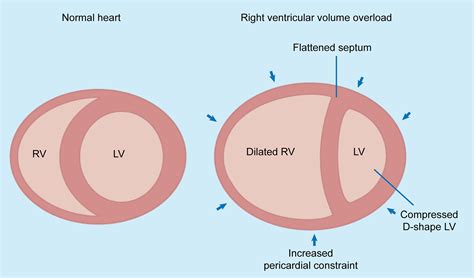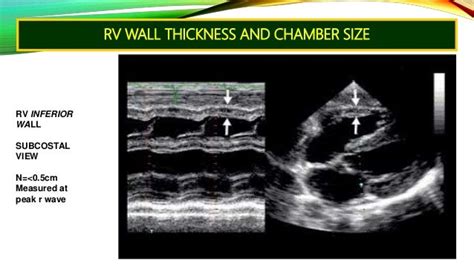normal rv lv ratio | normal rv wall thickness normal rv lv ratio The Normal RV. The RV is 10-15% larger in volume than the LV, with thinner free wall and smaller mass. 3 With aging, there is a reduction in RV mass and volume and an .
Discover Malta International Airport (MLA): Flight schedule and live updates, weather, car rental, and location in Malta.
0 · rv vs Lv failure
1 · rv free wall thickness
2 · rv Lv ratio on ct
3 · rv Lv ratio measurement
4 · rv Lv ratio meaning
5 · right ventricle grossly normal size
6 · normal rv wall thickness
7 · normal right ventricular dimensions echo
Est-il dangereux de voyager à Malte ? Malte est un pays sûr. Les principaux indices de criminalité sont plus bas à Malte que dans la majorité des pays européens.
Evaluation of the right ventricle (RV) is a key component of the clinical assessment of many cardiovascular and pulmonary disorders. There are many ways to evaluate the RV, most of which can be accomplished noninvasively and without radiation exposure.According to the latest European Society of Cardiology (ESC) guideline, a right ventricle–to–left ventricle (LV) diameter ratio >1.0 is the most appropriate method for determining dysfunction .
A normal ejection fraction is 53-73% (52-72% for men, 54-74% for women). Refer to Table 2 (normal values for non-contrast images) and Table 4 (recommendations for the normal range, . right ventricle/ left ventricle end diastolic basal diameter ratio >1. the right ventricular outflow tract is considered enlarged when the measured diameter in the parasternal long axis . The right ventricular to left ventricular diameter (RV:LV) ratio measured at CT pulmonary angiogram (CTPA) has been shown to provide valuable information in patients with .
The Normal RV. The RV is 10-15% larger in volume than the LV, with thinner free wall and smaller mass. 3 With aging, there is a reduction in RV mass and volume and an .Normal reference values for right ventricular to left ventricular endsystolic (RV/LVes) ratio in healthy children and individual levels of pulmonary hypertension patients (red diamonds).GUIDELINES AND STANDARDS. Guidelines for the Echocardiographic Assessment of the Right Heart in Adults: A Report from the American Society of Echocardiography. Endorsed by the . A basal RV diameter > 42 mm and/or RV:LV ratio > 1 indicate RV dilatation. More recent data support a normal basal RV size > 47 mm in males and 43 mm in females [21•]. .
right ventricular systolic pressure > 35 mmHg is consistent the " 60/60 sign ", putatively indicating an acute cause of elevated right ventricular pressures, with a pulmonary valve acceleration time <60 ms, and a tricuspid regurgitation jet >30 but <60 mmHg Right ventricular enlargement (also known as right ventricular dilatation (RVD)) can be the result of a number of conditions, including: pulmonary valve stenosis; pulmonary arterial hypertension; atrial septal defect (ASD) ventricular septal defect (VSD) tricuspid regurgitation; dilated cardiomyopathy; anomalous pulmonary venous drainage
total left ventricular myocardial mass index (non-compacted) >15 g/m 2. non-compacted/compacted myocardium ratio of ≥3:1 in at least one of the following segments (1–3, 7–16) – the apical segment 17 is excluded. trabeculation (non-compacted/compacted) in segments 4–6 of ≥2:1. Right ventricular dysfunction usually results from either pressure overload, volume overload, or a combination. It occurs in a number of clinical scenarios, including: pressure overload. cardiomyopathies: ischemic, congenital. valvular heart disease. arrhythmias. sepsis. It can manifest as right heart strain. Pre-capillary pulmonary hypertension is considered if the pulmonary artery wedge pressure (PAWP) is ≤15 mmHg, pulmonary vascular resistance (PVR) is ≥ 3 Wood units (WU) and mPAP is >20 mmHg. Post-capillary pulmonary hypertension is now defined as mPAP >20 mmHg and PAWP >15 mmHg.
dP/dt denotes the rate at which left ventricular pressure rises and indicates systolic contractile function 2,4. Left ventricle. normal: >1200 mmHg/s. borderline: 800-1200 mmHg/s. reduced: <800 mmHg/s. severely reduced: <500 mmHg/s. . diastolic volumes >104 mL (females) or >155 mL (males) systolic volumes >49 mL (females) or >58 mL (males) increasingly spherical morphology. a normal left ventricle has prolate ellipsoidal morphology, with a long axis roughly twice that of the short axis.

Hypertrophic cardiomyopathy is characterized by left ventricular hypertrophy (wall thickness >12-15 mm; normal wall thickness is 12 mm or less, measured during diastole) without obvious etiology. Associated right ventricular hypertrophy may be seen in 15-17% of cases. RVD (right ventricular diameter): LVD (left ventricular diameter) ratio >1 on reconstructed four-chamber views. RVD:LVD ratio >1 on standard axial views is not considered to be a good predictor of right ventricular dysfunction 8 The cardiac silhouette is considered enlarged if the cardiothoracic ratio is greater than 50% on a PA view of the chest 1. See main article: enlargement of the cardiac silhouette for more information.
rv vs Lv failure
right ventricular systolic pressure > 35 mmHg is consistent the " 60/60 sign ", putatively indicating an acute cause of elevated right ventricular pressures, with a pulmonary valve acceleration time <60 ms, and a tricuspid regurgitation jet >30 but <60 mmHg Right ventricular enlargement (also known as right ventricular dilatation (RVD)) can be the result of a number of conditions, including: pulmonary valve stenosis; pulmonary arterial hypertension; atrial septal defect (ASD) ventricular septal defect (VSD) tricuspid regurgitation; dilated cardiomyopathy; anomalous pulmonary venous drainage
fake rollex watches for men
total left ventricular myocardial mass index (non-compacted) >15 g/m 2. non-compacted/compacted myocardium ratio of ≥3:1 in at least one of the following segments (1–3, 7–16) – the apical segment 17 is excluded. trabeculation (non-compacted/compacted) in segments 4–6 of ≥2:1. Right ventricular dysfunction usually results from either pressure overload, volume overload, or a combination. It occurs in a number of clinical scenarios, including: pressure overload. cardiomyopathies: ischemic, congenital. valvular heart disease. arrhythmias. sepsis. It can manifest as right heart strain.
Pre-capillary pulmonary hypertension is considered if the pulmonary artery wedge pressure (PAWP) is ≤15 mmHg, pulmonary vascular resistance (PVR) is ≥ 3 Wood units (WU) and mPAP is >20 mmHg. Post-capillary pulmonary hypertension is now defined as mPAP >20 mmHg and PAWP >15 mmHg. dP/dt denotes the rate at which left ventricular pressure rises and indicates systolic contractile function 2,4. Left ventricle. normal: >1200 mmHg/s. borderline: 800-1200 mmHg/s. reduced: <800 mmHg/s. severely reduced: <500 mmHg/s. . diastolic volumes >104 mL (females) or >155 mL (males) systolic volumes >49 mL (females) or >58 mL (males) increasingly spherical morphology. a normal left ventricle has prolate ellipsoidal morphology, with a long axis roughly twice that of the short axis. Hypertrophic cardiomyopathy is characterized by left ventricular hypertrophy (wall thickness >12-15 mm; normal wall thickness is 12 mm or less, measured during diastole) without obvious etiology. Associated right ventricular hypertrophy may be seen in 15-17% of cases.
RVD (right ventricular diameter): LVD (left ventricular diameter) ratio >1 on reconstructed four-chamber views. RVD:LVD ratio >1 on standard axial views is not considered to be a good predictor of right ventricular dysfunction 8
rv free wall thickness

rv Lv ratio on ct
Explore our collection of sweaters and sweatshirts ! From oversized t-shirts to long sleeve t-shirts, we have the new closet staples you need. Explore high-quality t-shirts .
normal rv lv ratio|normal rv wall thickness




























